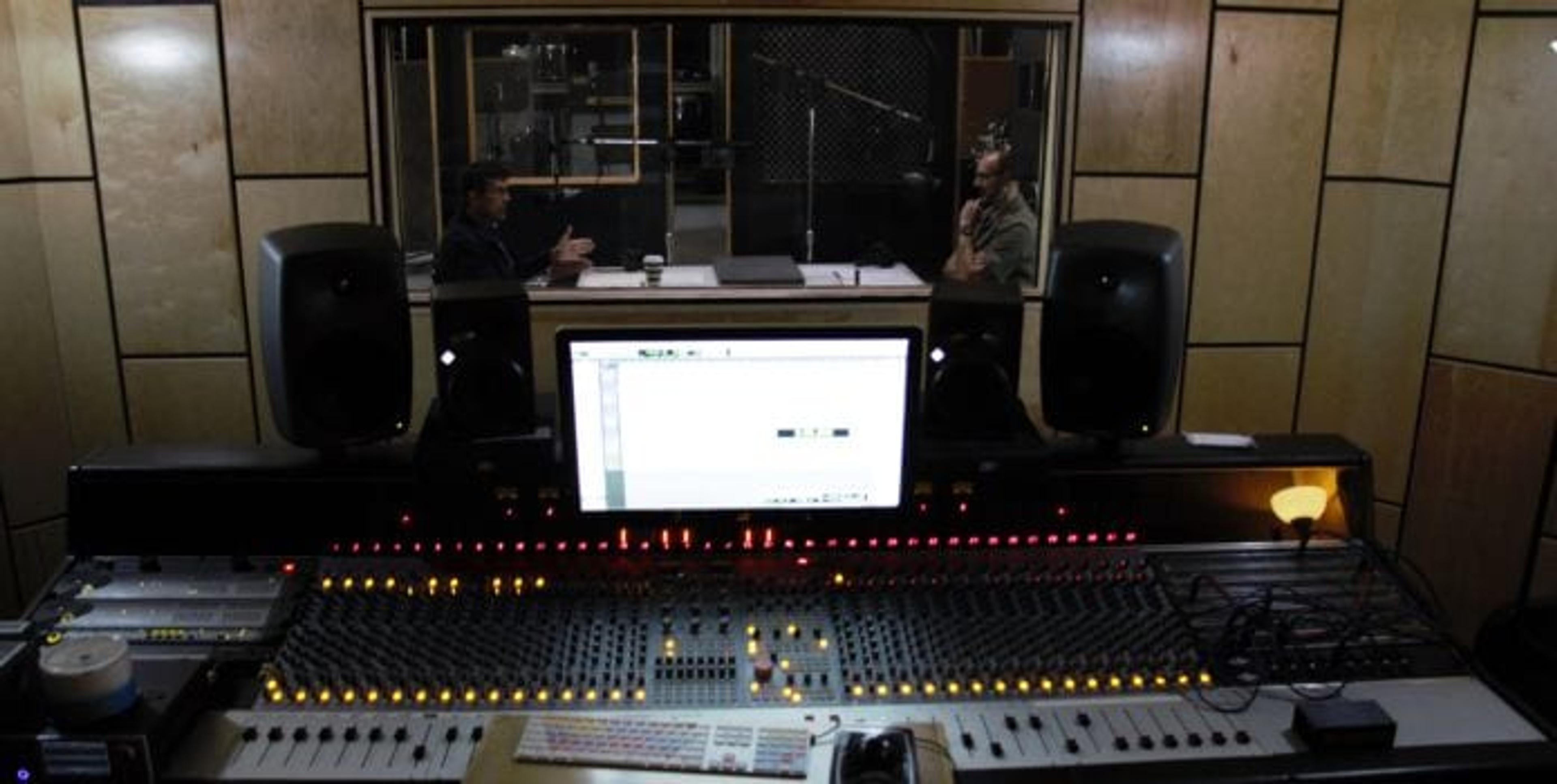Relaxation Techniques for Stress
| 1 min read

00:00
00:00
About the Show
On this episode, Chuck Gaidica and Dr. Duane DiFranco discuss deep breathing techniques and how they can combat stress.
“The research is very clear, 10 minutes a day, a couple, three times a day, [your] heart rate comes down, blood pressure comes down, performance at work increases, relaxation increases, well-being increases. So, this is the real deal.” – Dr. Duane DiFranco
In this episode of A Healthier Michigan Podcast, we explore:
- The physical effects of stress
- Why relaxation is the key to stress reduction
- How 10 minutes a day can keep anxiety away
- A walk-through of a deep breathing exercise
Transcript
Chuck: This is A Healthier Michigan Podcast, episode 16. Coming up, we discuss relaxation techniques for stress.
Chuck: Welcome to A Healthier Michigan Podcast, the podcast dedicated to navigating how we can improve our health and wellness, well-being, through small, healthy habits we can all do every day, and then turn them into really great habits long term. Something you can implement now. And we’re going to practice some stuff on this podcast that you can do with us. I’m Chuck Gaidica, back to be your host. And Dr. Duane DiFranco is back with us. He is a certified psychiatrist, currently Senior Medical Director at Blue Care Network of Michigan. And so we’re glad to have you back and guide us through all these things. We’re going to be talking in all of our podcasts about so many different topics. And we’ve done that already on this episode. Dr. DiFranco, you’ve got to help us. I was going to bring in a masseuse for us for this episode, while we’re talking.
Dr. DiFranco: That’d be good too.
Chuck: Wouldn’t that be nice, huh?
Dr. DiFranco: Yeah, right.
Chuck: A little perk. But let’s talk about relaxation techniques. And then I know you want to encourage me and everybody who’s listening to actually do a couple of these.
Dr. DiFranco: Right. As we mentioned in previous podcasts, when we have a stress response to something in the environment that is stressing us out, we really ought to take a serious look at that and try to solve the problem that’s out there. But I’m not saying that, oh, stress is good for you, just solve the problem and it’ll go away. Stop complaining. That’s far from the message. Quite the opposite actually, because so often our stress response can be over-exuberant. And so there are some research-proven techniques that can lower our overall stress response, bring it down to a level that … It’s like a gain on an amplifier, just bring it down to where I can enjoy the music. And we talked about some of those techniques from positive psychology in the last podcast.
Chuck: Right.
Dr. DiFranco: And now, in the next three, we’re going to be going through these relaxation techniques. And in general, our expression of emotion and internal states is a two-way street. So research shows, for example, that obviously we know that if we’re happy we smile, if we’re sad we frown, right?
Chuck: Mm-hmm (affirmative).
Dr. DiFranco: The thing that’s less intuitive but just as true is that if we smile we begin to feel happy. So one of the simple things to do to feel happier is just put a little half smile on your face as you walk down the street.
Chuck: And that can tend to rub off on the people around you, right? Because they sometimes have to smile back.
Dr. DiFranco: It absolutely does. So if you’re not somebody who does that naturally, try it at work. And you think, “Oh, people are going to think I’m weird or something.” No, they smile at you. It’s nice. It makes you feel good and absolutely it rubs off on people. This is huge. Well, in a similar way, when we get very, very stressed, we tend to tighten our muscles and we tend to breathe very shallow and at the top of our lungs. If we can reverse that just as I just described, it works, it’s a two-way street. If we can force our breathing to become more even, more relaxed, more deep, then our stress level begins to go down. And so these three relaxation techniques, deep breathing, guided imagery, progressive muscle relaxation. We’re going to be going through deep breathing today, and then each of the others in the next two podcasts.
Chuck: Okay. A real quick snapshot. Guided imagery means I’m conjuring up the place where I want to go. I want to be on the beach. Well, not near Mount Kilauea right now but on the beach in Hawaii.
Dr. DiFranco: Exactly.
Chuck: That’s my place to feel relaxed?
Dr. DiFranco: You got it.
Chuck: Okay. I’m looking forward to that episode. I’m not sure which it is but that’s coming up. We’ll take everybody to Hawaii.
Dr. DiFranco: Well, and remember, and it’s important for people to know that not every relaxation technique is for every person. Some of them work better for some people.
Chuck: Sure.
Dr. DiFranco: And then when we get to guided imagery in the last podcast, there’s many different forms of guided imagery. Some are very specific, they bring you to a forest or to the beach.
Chuck: Okay.
Dr. DiFranco: Some are very general. You pick the place, just you’re there. Some are very, oh, I think some people would find them a little out there. It’s more like you’re floating in space and stuff like that.
Chuck: Really?
Dr. DiFranco: Oh, yeah, yeah, yeah.
Chuck: Oh yeah.
Dr. DiFranco: And, again, the message is whatever works for you. But try it all on for size, so to speak, and then see what works. But deep breathing is a core relaxation exercise.
Chuck: And you can do it more than once a day, right?
Dr. DiFranco: Oh, you can do it all day long.
Chuck: Well yeah.
Dr. DiFranco: Breathing deeply, evenly, naturally. Reminding yourself. And, yes, unlike progressive muscle relaxation and guided imagery, once you become familiar with deep breathing, you can do it any time. You can do it in the middle of a meeting, you can do it on the phone. You might even be able to do it while recording a podcast.
Chuck: Okay. I’m starting. All right, so now we see that there are proven effects to this as well, right? This is not just an idea that we should inhale deeply. You’re seeing research that shows this is going to help us.
Dr. DiFranco: The research is very clear. 10 minutes a day, a couple, three times a day, heart rate comes down, blood pressure comes down, performance at work increases, relaxation increases, well-being increases. So this is the real deal.
Chuck: I’ve seen this in my own family, a family member who suffers from hypertension and high blood pressure, going over 200.
Dr. DiFranco: Yeah, that’s high.
Chuck: I forget over what but high. Stroke category high.
Dr. DiFranco: Dangerous, yeah.
Chuck: To put that person in front of an iPad with visual imagery, so it’s kind of both, playing soft music, the spa channel, right? It’s bringing it down. But to watch on the blood pressure go from over 200 to 178 to 156 to 134 in a matter of 10 minutes.
Dr. DiFranco: Yeah, during the exercise.
Chuck: Yeah.
Dr. DiFranco: And then beyond that, if that person were to do that a couple times a day every day for three weeks or so – again, getting back to that habit thing – you would notice their blood pressure being lower even when they’re not doing the exercise.
Chuck: So it’s not just an emergency response?
Dr. DiFranco: Correct.
Chuck: Got you. Okay. So are you ready to lead us through something now …
Dr. DiFranco: Let’s go.
Chuck: … we can all do?
Dr. DiFranco: Let’s go.
Chuck: Okay. All right.
Dr. DiFranco: Yeah. All right, before we begin with deep breathing, I’d like to teach you what is meant by a cleansing breath. Taking a cleansing breath means simply breathing in as deeply and fully as you can without creating strain, holding that breath at the top of your lungs for a few seconds, and then emptying your lungs completely. Try it now. Take a deep breath in, fill your lungs as full as they can be without straining, hold it for two, three, and breathe out. Empty your lungs completely again, without straining. We tend to breathe very shallow, at the top or in the middle of our breath. We never use our full lung volume.
Dr. DiFranco: Just to go off on a little bit of a tangent, there are receptors in all of our muscles, including the muscles of our chest wall and diaphragm, that measure how stretched the muscle is. This is how our brain knows where our limbs are in space even though our eyes are closed or we’re not looking at them.
Chuck: Wow.
Dr. DiFranco: Okay? What happens is through chronic stress those muscles get tight, or chronic pain can do the same thing. And those receptors reset at the shortened, tight muscle length. And your brain begins to act as if that’s normal. These exercises help retrain your brain, retrain those receptors to realize what being relaxed really is.
Dr. DiFranco: All right, let’s begin.
Dr. DiFranco: Take a brief moment and become as comfortable as you can be. You may, for example, choose, if you’re at home and in a private place, to loosen your belt, unbutton a tight shirt collar perhaps, take your shoes off. Lie down or sit with your feet flat on the floor and your back comfortably upright, supported by your chair. Close your eyes. Place your hands, whether you’re lying or sitting, palms down on your thighs. Now, place a hand on your belly. Let your abdomen relax and simply breathe. Notice how the hand on your belly rises and falls with each breath. Take a few moments now and just breathe. Slowly, freely. Make each breath in and each breath out about five seconds, maybe five heartbeats, long. Breathe this way now, deeply, filling first your belly then the middle of your chest, and finally the top of your lungs before exhaling.
Dr. DiFranco: Imagine that with each breath in warm and peaceful energy is being drawn up through your feet, through your legs, and up into first your abdomen and then your chest and finally to the top of your head. You may notice a brief pause in your breathing at the bottom of each breath out. You can stay there a moment before breathing in again. Notice your belly rise when you take air in, air that sustains you, feeds you. With each breath in you are being filled with life and with calm energy. With each breath out, feel tension leaving your body. And now take a deep, cleansing breath. Hold it at the top of your lungs for three, two, one seconds, and let it out, emptying your lungs completely. And now allow your body to return to its own free breathing.
Dr. DiFranco: As your body continues to relax more and more deeply, you may experience a heightened awareness of your surroundings, of smells, of sensations, of sounds. You may be more conscious of the chair beneath you, supporting you, of the clothes on your body. You may hear every day sounds with greater clarity, sounds that you weren’t even conscious of before you closed your eyes. These things are not important. They’re like leaves flowing slowly past you as you watch a gently flowing stream from a warm place along its banks. Let them drift past. Everything you experience now helps you to relax, helps my voice to let you relax deeper. Focus now on your breathing. Notice the air entering your body, bringing peace and life with it. Relax your muscles as each breath out carries useless tension away. Notice your heart beating as you breathe. There is warmth there. There is strength there. Just breathe and relax even more deeply.
Dr. DiFranco: Throughout the day, you will recall the peace that you feel right now, and that memory will help you return to this deep, relaxed and slow breathing pattern that brings comfort and relaxation with it. When you’re ready, open your eyes and rise to greet your day.
Chuck: So that exercise was about what, in terms of length of time?
Dr. DiFranco: A little less than 10 minutes. Kind of felt a little longer than that, didn’t it?
Chuck: Well, it does because – I can’t speak for anybody else – you do drift away into this place.
Dr. DiFranco: Yes.
Chuck: Which was delightful.
Dr. DiFranco: Yes. And it’s very efficient because you get a lot more than 10 minutes worth of relaxation out of it.
Chuck: Yeah.
Dr. DiFranco: That’s the experience most people have anyway.
Chuck: So I’ve got a few questions.
Dr. DiFranco: Sure.
Chuck: Having gone through most of that with you while you were doing it.
Dr. DiFranco: Yep.
Chuck: Is it important that I’m breathing through my mouth or nose, or does it matter?
Dr. DiFranco: Good question. I will say it really doesn’t matter.
Chuck: Okay.
Dr. DiFranco: Some folks will say – and I used to teach actually – breathe in through your nose and out through your mouth. I think that that tends to be quite natural. Your nose is there for, among other things, to warm and moisten the air that you breathe. So breathing through the mouth all the time, your mouth can get dry, that can become a distraction. But having to sort of concentrate on breathing in through my nose, out through my mouth can also be a distraction. And when I would do this with large audiences, I’d look about the room and notice everyone was breathing through their mouth anyway.
Chuck: Okay.
Dr. DiFranco: So I tend not to specify one way or the other.
Chuck: So have you done audio versions like this before, or just with groups of people? Because it sounds like you should have your own channel. Really.
Dr. DiFranco: I appreciate that.
Chuck: No, it was delightful.
Dr. DiFranco: Yeah. No, I’ve done it with my own patients and with, as I say, groups of folks. But not recorded before.
Chuck: I think episode 16 here is going to be repeated over and over again for people who are looking for this. And my last question before we wrap it up, when you became a psychiatrist, when you were a little doctor and then you grew up to be a big doctor, did you take a class on how to speak with that tone that can just bring us all some peace?
Dr. DiFranco: No, no. Becoming a father did that.
Chuck: Okay. I just wanted to know.
Dr. DiFranco: Yeah.
Chuck: Okay, good. Hey, we’re glad you’ve been with us. I think I should speak more softly and slowly now. This has been episode 16 of our podcast. We’re so delighted you’re here for A Healthier Michigan Podcast. It’s all brought to you by Blue Cross Blue Shield of Michigan. If you liked the show and you want to know more, you can check it out at ahealthiermichigan.org/podcast. All of the episodes are there. Important links will be there for you as well. You can go back and listen again and again. Let your friends know about this. You can check us out on iTunes and Stitcher. You can leave a review or a rating and get all the episodes you need on your smartphone or your tablet. Be sure to subscribe for Apple Podcast and Stitcher or your favorite podcast app, that’s the way to get to us. Next week we’re going to talk about guided imagery with Dr. DiFranco on how it can help us all reduce stress. Maybe even more so than today. Is that possible? Have a great week.





